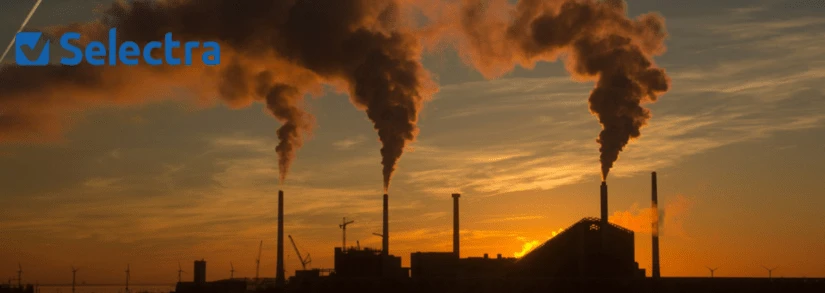81% of Ireland's Energy Use Last Year Was From Fossil Fuels

Fossil fuels were Ireland's primary energy source last year, accounting for 81% of primary energy supply, according to a recent analysis of global energy data by KPMG. This figure places Ireland’s energy dependency firmly in the top ranks of developed nations and underscores the scale of the decarbonisation challenge ahead.
Fossil Fuels Behind 81% of Irish Energy Use Last Year
Fossil fuels were Ireland's primary energy source last year, accounting for 81% of primary energy supply according to The 74th edition of the Statistical Review of World Energy, a collaboration between the Energy Institute, Kearney, and KPMG.
The data reveals that a combination of the closure of the last coal-fired power station and strategic renewable energy initiatives led to a significant reduction in emissions, even as energy demand increased:
Ireland's Energy Use 2024
Emissions from the energy sector specifically saw an 8.9% decline, marking the third consecutive year of reduction.
This was partly achieved through a rise in electricity imports from Great Britain, a critical flexibility measure that allows Ireland to meet demand without relying on domestic fossil fuel generation during periods of low renewable output.
Emissions from the transport sector also saw a modest 1.2% decrease, the first since 2020. This was a direct result of wider adoption of biofuels and electric vehicles, which was buoyed by government incentives and a growing awareness of climate goals.
This progress helped to offset a 4.1% increase in the number of vehicles on the road, highlighting the effectiveness of policy in shifting consumer behaviour. In contrast, residential energy emissions grew by 4.9%, a concerning trend driven by higher consumption of non-renewable sources.
Ireland Emissions Reductions Trend (2019-2024)
Emissions (%)
This rise can be attributed to several factors, including the country's relatively old housing stock and a lag in the adoption of home energy efficiency retrofits, leaving many households still heavily reliant on oil and gas for heating.
A Balancing Act of Progress and Hurdles
The report underscores that fossil fuels remain central to Ireland’s energy system. Natural gas, in particular, continues to be a dominant source, fuelling 42% of all electricity generation in 2024.
This dependence rose by 0.7% from the previous year, despite a reduction in the use of coal and peat. This trend highlights a significant reliance on gas as a "bridge fuel," a necessary but not long-term solution to balance the intermittent nature of wind and solar power.
James Delahunt, Head of Energy & Natural Resources at KPMG in Ireland, noted that while the data shows Ireland's potential, it also highlights the urgent need for a more strategic approach.
Growing risks underscore the need to prioritise policies and initiatives that will efficiently and cost-effectively deliver renewables and system flexibility.
Overcoming Challenges to Decarbonisation
Ireland faces critical issues related to energy security, escalating electricity costs, and significant delays in key infrastructure projects.
The budget for the Temporary Emergency Generation Programme, a measure to ensure supply, has more than tripled, and a proposed floating LNG facility is projected to cost hundreds of millions of euros.
These projects, while necessary for short-term security, represent substantial financial outlays that could otherwise be invested in long-term renewable infrastructure.
Electricity prices have become a major concern, with Ireland now holding the highest non-household electricity costs in the EU and the second-highest household rates. Businesses have identified these high costs as a major risk to investment, which could threaten Ireland's decarbonisation ambitions.
Electricity Prices EU 2025
Eur/kWh
High prices can make the transition to electric fleets and heat pumps less appealing, slowing the overall shift away from fossil fuels.
Grid infrastructure is also a bottleneck, struggling to keep pace with soaring demand from a growing number of data centres and the increased electrification of heating and transport.
Permitting and planning processes for major infrastructure, such as new power lines and large-scale wind farms, are often protracted, causing significant delays and pushing back project delivery dates.
However, the €200 billion National Development Plan aims to address these challenges by funding major grid upgrades to support both economic growth and renewables integration in tandem.
Renewable Energy Growth vs. Demand
Despite a 4.1% increase in electricity demand last year, the share of renewable generation actually saw a slight decrease. This illustrates a key challenge: the growth of electricity demand is currently outpacing the development of renewable sources.
The Celtic Interconnector, a crucial project to increase electricity import capacity, is now delayed until 2028, a setback for the country's energy import strategy.
On a positive note, solar power production surged by 71% in 2024, now meeting 3% of the country's electricity demand. This rapid growth, along with wind energy, has positioned Ireland as a leader in renewable penetration globally. The government’s Renewable Electricity Support Scheme (RESS), which provides a long-term contract for renewable electricity projects, has been instrumental in driving this investment, particularly in solar and onshore wind.
Offshore wind is also a key part of the strategy, with several major projects planned to leverage Ireland's abundant wind resource, although these face considerable infrastructural and regulatory hurdles.
Ultimately, while the gains in 2024 are significant, the data from the review suggests that current efforts may not be enough to meet Ireland’s ambitious goal of achieving 80% renewable electricity by 2030.
The government's own Sustainable Energy Authority of Ireland (SEAI) has cautioned that the country is falling short of its carbon budget and EU targets. The coming years will be crucial in determining whether Ireland can accelerate its transition and build a truly resilient, sustainable energy system.
Looking For Other Ways to Reduce Your Energy Bill?
Stay up to date with the latest news from Selectra to learn how to lower your energy bills or find a cheaper electricity provider.
